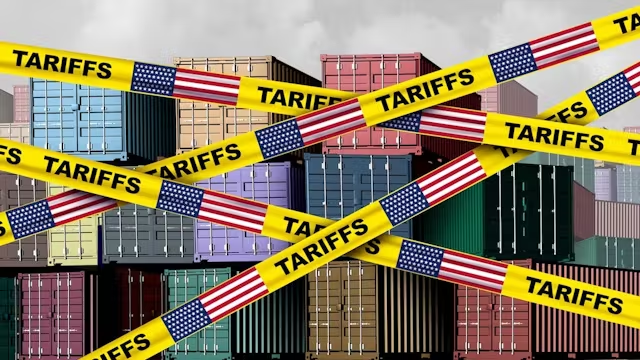How Contracts Can Help Firms Navigate the Uncertainty of Global Tariffs Last week, President Trump signed an executive order imposing a sudden minimum 10% tariff on nearly all U.S. imports. The sweeping measures, which average 29% across all affected nations, were followed by a targeted 125% tariff on Chinese imports—wiped out trillions in global equity value within 48 hours. Then, just as abruptly, the Trump administration announced a 90-day pause for all but China, triggering a 9.5% rebound in the S&P 500. This isn’t just volatility; it’s a stress test. Firms still relying on static sourcing models and boilerplate contracts are gambling with their margins. In a world where trade policy can flip overnight, strategic contract management isn’t a back-office task: it’s frontline anticipatory thinking and action. Major tariff impositions—such as the 2018–2020 U.S.–China trade war and the 2024 U.S. tariff spike under Executive Order 14098—sent companies scrambling to protect their supply chains and profitability. In this environment of extreme trade uncertainty, contract management has become a critical strategic function. We draw on decades of experience in global contracting, supply chains, and international trade, combining hands-on government and industry roles with rigorous economic analysis of U.S. import and export patterns. Our insights, reflecting both operational depth and data-driven expertise, are shaped by years of studying how markets and contracts respond to disruption. Using these insights, we outline five ways businesses can strengthen their contractual frameworks to navigate the new tariff regime while protecting operations from disruption. 1. Strengthen Force Majeure Clauses to Account for Tariffs Force majeure provisions should explicitly include “material changes in trade policy, tariffs, sanctions, and import/export restrictions” to ensure structured renegotiation if sudden tariffs make agreements commercially unviable. A proactive approach involves updating force majeure language to cover “government-imposed tariffs, retaliatory duties, and other material trade barriers,” requiring notification timelines and renegotiation frameworks, and defining mechanisms for cost-sharing when tariffs exceed certain thresholds. Several risks need mitigation in this area. Courts may view tariffs as foreseeable business risks, so it’s important to define specific tariff percentage thresholds (e.g., “tariff increases exceeding 15% from contract date rates”) that trigger the clause. Counterparty push-back can be addressed by referencing established precedent, such as the Federal Acquisition Regulation 52.212-4(f) Excusable Delays clause that explicitly recognizes “acts of the Government in either its sovereign or contractual capacity.” In real-world application, a company recently rejected a supplier’s claim that steel price increases constituted force majeure, but Trump’s announcement on April 2nd affecting 185 countries represents a fundamentally different scenario that caught entire industries by surprise. Real-world application can be seen with Howmet Aerospace, which declared a force majeure event to avoid fulfilling certain supply contracts impacted by new tariffs. This move, prompted by President Trump’s sudden 20% tariff on aerospace imports, gave Howmet the right to halt shipments of critical components if tariffs made performance commercially unviable. By invoking the clause, the company signaled it would not absorb the tariff costs on its own. The announcement caught the industry’s attention—airlines, plane makers, and suppliers across the aerospace sector began scouring their contracts to assess tariff exposure and renegotiate terms. Howmet’s bold use of a force majeure clause set a precedent, prompting other firms to tighten contract language around tariffs going forward. 2. Implement Price Adjustment & Cost-Sharing Mechanisms Contracts can include price escalation clauses structured with tariff pass-through clauses, where if a tariff increase raises costs beyond an agreed threshold (e.g., 5% or more), the contract allows for renegotiation of pricing. Shared burden agreements mean buyers and suppliers agree in advance on how additional costs will be allocated (e.g., 50/50 cost-sharing beyond a 10% tariff hike). Indexed pricing models use external benchmarks like import duty rates that automatically adjust based on trade policy changes. Renegotiation based on harmonization import code interpretation has proven effective, as one large energy company importing fabricated steel pipes established a free trade zone and worked with the Department of Commerce to re-classify the Harmonized Tariff Schedule (HTS) code to lower or eliminate tariffs. Walmart provides an excellent example of cost-sharing implementation. The retail giant used its purchasing power to negotiate cost-sharing with suppliers. Facing a broad sweep of new import tariffs (ranging from 10% up to 50% on goods from dozens of countries), Walmart demanded price concessions from its overseas vendors to offset the duties. In practice, this meant foreign manufacturers had to reduce their selling price to Walmart, effectively splitting the tariff burden. In contrast, Volkswagen chose a price adjustment approach in response to a new 25% U.S. import tariff on all foreign-made cars. VW announced it would add an “import fee” surcharge to vehicles it sells in the U.S. that are made abroad. This is essentially a price adjustment directly tied to the tariff. Rather than quietly raising the sticker price, VW made explicit that an extra charge would apply to imported models, reflecting the tariff cost. Several risks require mitigation in this area. Documentation challenges can be addressed by establishing clear baselines by documenting current HTS codes, duty rates, and preferential trade agreement status at contract signing. Verification issues can be solved by requiring third-party verification or government documentation of tariff payments. Market competitiveness concerns should be addressed by including requirements that suppliers demonstrate efforts to minimize tariff impacts. Currency fluctuation complications can be managed by creating comprehensive adjustment formulas that account for both tariff and currency impacts separately. 3. Build Flexibility Through Multi-Sourcing and Contingency Plans Contracts should encourage diversified sourcing strategies through multi-sourcing provisions that include clauses permitting sourcing from alternative suppliers across different trade regions. Supplier substitution rights ensure buyers retain the right to shift purchases to approved alternatives without penalties. Regional reallocation provisions define processes for shifting production from China to Mexico, India, or Vietnam, depending on cost and tariff impacts. Hasbro exemplifies this strategy. The U.S. toy maker embarked on an aggressive diversification of its manufacturing footprint during the U.S.–China trade war. Anticipating new tariffs on toys, Hasbro accelerated plans to shift production out of China. It







